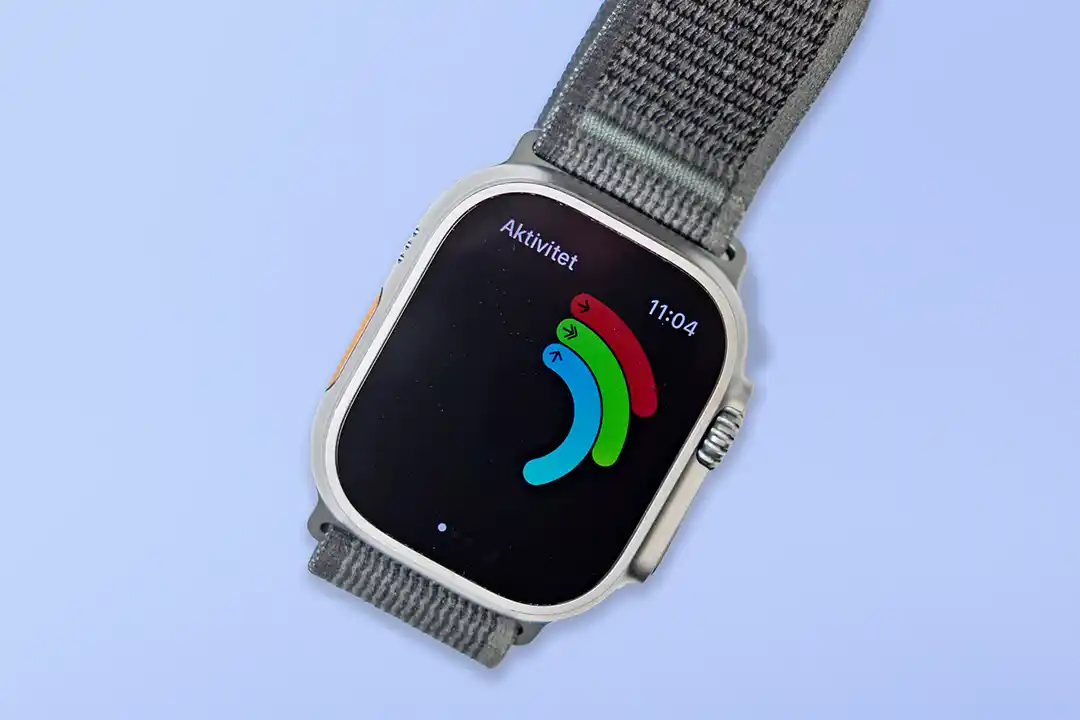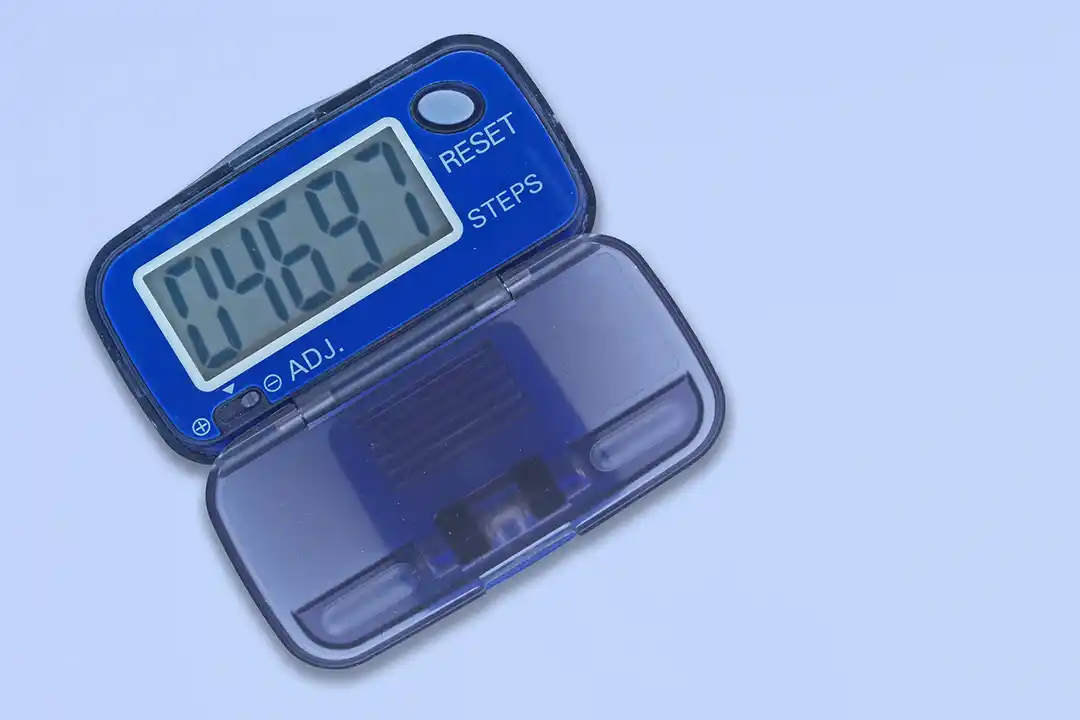Help! My smartwatch became a PT from hell
Optimising your body and mind has never been easier. But is it really that healthy to measure our health down to every heartbeat? Wearable technology, pressure to perform, a growing wellness industry and AI are becoming a toxic cocktail.
By Tobias Brandel

Help! My smartwatch became a PT from hell
Optimising your body and mind has never been easier. But is it really that healthy to measure our health down to every heartbeat? Wearable technology, pressure to perform, a growing wellness industry and AI are becoming a toxic cocktail.
By Tobias Brandel
“People are so self-absorbed.” My mothers’s reaction when I showed her which of “my” articles had performed best lately was not quite the maternally, uncritical praise I had expected.
Last autumn, I took on the role of science editor after several years as head of Svenska Dagbladet’s political coverage. To clarify what type of articles I am now editing, I showed her a recent summary of successful headlines from the managing editor’s endless collection of PowerPoint presentations. Among them: “You control the success of your child – but not the way you expect”, “Mediterranean eating habits beat all other diets in the long run” and “Henrik, 42, follows the most effective method of weight training according to research.”
A slightly more refined way of expressing my mother’s nevertheless rather sharp observation is that SvD’s science coverage focuses quite a bit on “useful science.” Stuff that helps people in their daily lives.
People want to perform in all areas
Our readers are interested in their own well-being and development; in health, nutrition, fitness, psychology and the process of learning.
These days, this type of journalism accounts for notably large sections of international news sites such as The New York Times and The Washington Post. People want to perform in all areas of life – career, family, leisure time, health.
As a freshman science editor, I soon discovered the role also included the specific requirement of presenting new scientific findings in the area of fitness and training every week. A slightly prejudiced – and totally incorrect – idea of the type of fitness articles that should work in a “Grey Lady” newspaper like SvD would be… well, home exercises for seniors.
However, I quickly came to the realisation that, in terms of their physical status, our fitness-interested readers perform well above the average exerciser, aiming for the elite. Articles on heavy gym workouts are appreciated the most.

When McKinsey recently published a special report on the wellness industry, it was valued at 1.5 trillion USD, with an annual growth rate of 5–10%.

When McKinsey recently published a special report on the wellness industry, it was valued at 1.5 trillion USD, with an annual growth rate of 5–10%.
Overall, SvD’s fitness pieces are often the best performing of all articles on the site during the day of publication, regardless of which indicators you look at – subscription sales, page views among existing subscribers, scroll depth and so on. At least in January (New Year’s resolutions must be fulfilled!), May (dawning beach panic!) and August/September (time for a fresh start after a wine-soaked holiday…).
The pattern is similar when it comes to the many articles we publish on research related to nutrition and diet. How should I eat to be as healthy and enjoy as long a life as possible?
Turning our gaze from the newspaper industry and looking more broadly at the tech sector, there is perhaps one small gadget above all else that is driving developments in terms of people’s persistent struggle to improve themselves.
The annual trend survey “Worldwide Survey of Fitness Trends” from the American College of Sports Medicine is something of a bible in the fitness industry. The top spot in 2023 went to wearable technology, a term that has consistently placed itself at or near the top of the survey results each year since it was first introduced on the list in 2016. By no means a coincidence, the first version of Apple Watch had been released on the market one year earlier.
The next phase is around the corner
Heart rate monitors and more basic types of fitness trackers have, of course, been around much longer than that. But as usual, it was Apple who perfected the concept and raised the bar with its version of the smartwatch, which quickly became the market leader.
Now the next phase of the wearable technology revolution is around the corner, with the AI hype reaching this sphere.
The spreading of rumours regarding Apple’s upcoming products is, in itself, something of a journalistic genre. Much of the recent speculation has concerned an “AI-based health coach” for Apple Watch. No such innovation was to be seen when the latest version was released in September 2023, but the likelihood is that it will appear in 2024, or perhaps it will have already launched by the time you read this.
The 2023 top spot in the annual “Worldwide Survey of Fitness Trends” from the American College of Sports Medicine went to wearable technology.


The 2023 top spot in the annual “Worldwide Survey of Fitness Trends” from the American College of Sports Medicine went to wearable technology.
The Apple Watch has evolved into a rather impressive health product in recent years. Today, it can measure your heart rate, body temperature, how much time you spend sleeping and standing, calculate the amount of calories you burn, and so on. Furthermore, the most advanced versions are also able to execute an ECG, measure your blood oxygen level and calculate your menstrual cycle. However, in these areas, the scientific evidence is more dubious (Apple provides a disclaimer in the footnotes that these functions are not for “medical use”).
AI technology is, of course, already being applied. For example, Apple uses machine learning to detect irregularities in heart rate or if the wearer is involved in a serious car accident (whereupon the watch automatically calls the emergency services).
Future areas
Some potential future areas of development for artificial intelligence in wearable technology include:
Detecting a range of health problems – acute or long-term, physical as well as psychological – by studying patterns, deviations and trends. It may also be possible to provide healthcare professionals with assistance in making diagnoses.
Creating personalised training, dietary and treatment programs based on each individual’s unique metrics and biometric data.
Motivating people to adopt a healthier lifestyle through smart forms of encouragement.
There are plenty of fitness apps for mobile devices that help you train and exercise on your own, based on video and audio instructions. But unlike a human personal trainer, such apps don’t tell you when you risk hurting your back doing heavy squats, or when your down dog is way too crooked. A number of companies are now experimenting with wearable technology in this regard, i.e. the use of built-in sensors to guide the user and provide feedback. The aim is to ensure that we don’t just exercise – but that we exercise in the right way.
Alas, personal trainers could soon join journalists and other professionals who have reason to worry about being replaced by an AI in the near future.
Nevertheless, there are still many things that smartwatches are far from mastering. The area of nutrition and diet, for example, is far more complex than simply measuring physical activity.

Perhaps the pedometer is the vote compass of wearable technology? In other words, the only digital service we really need.

Perhaps the pedometer is the vote compass of wearable technology? In other words, the only digital service we really need.
Nutrition research is sometimes subject to criticism for methodological issues. For practical reasons, scientists are constrained to execute observational studies and to rely on people’s own information regarding their dietary habits. The problem, of course, is that people – whether due to forgetfulness or embellishment – don’t always do what they say they do.
The problem, of course, is that people – whether due to forgetfulness or embellishment – don’t always do what they say they do.
And it is difficult to distinguish between cause and effect in these types of studies – or what is simply genetics, rather than habits.
An increasing amount of research also suggests that how we are affected by our diet is highly individual (which explains why individuals who have achieved success with a certain diet – be it low-carb, intermittent fasting or something else – are so eager to tell the world). There quite simply isn’t one diet that suits everyone.
AI has enormous potential
Here, artificial intelligence could have enormous potential when it comes to cracking the individual code. Exactly how should I, out of all billions of people, eat in order to be healthy? But more advanced measurement methods are also required. Blood sugar meters will be a key component. Google, among others, has conducted research into contact lenses that can measure the glucose level in tears.
If we adopt a full-blown science fiction perspective, Apple Watch and the likes from Samsung, Fitbit and other manufacturers are probably just one step on the path to a future reality in which we have a chip implanted directly into our body, or nanobots injected into our bloodstream.
But enough for now about the technological developments – what are the human drivers behind this accelerating monitoring of ourselves?
Perhaps it’s not really all that remarkable. All high-performing, self-absorbed people have simply been presented with yet another way to measure their success in life. Society’s constant pressure to perform, literally strapped around your wrist.
Extremely frustrated
Most smartwatches are pretty good at detecting when you consciously or unconsciously engage in some form of physical activity, such as walking or cycling. They discreetly buzz to suggest that they should start monitoring your current training session. I myself get extremely frustrated when I have commenced a walk or gym workout and realise that I have forgotten to put on my watch. If the exercise isn’t registered then it hasn’t happened!
The most amusing experience occurred a few years ago when I was taking my two children to preschool, and the Samsung watch I was wearing at the time asked me if I was engaged in high-intensity interval training.
Nowadays, as soon as there is a trend change in my physical performance, I receive a notification from my Apple Watch: I have exercised 27% more this month than last, my recovery heart rate has improved by 14% compared to the same period last year, and so on.
By gathering more and more data, we obtain an increasingly better basis for making decisions about our health – or having such decisions made for us. Inevitably, the smartwatch seems destined to become a personal 24-hour health employee.
When McKinsey recently published a special report on the wellness industry, it was valued at 1.5 trillion USD, with an annual growth rate of 5–10%. The consulting firm provides quite a good summary of all aspects covered by the term “wellness” from a consumer perspective:
- Health
- Fitness
- Nutrition
- Appearance
- Sleep
- Mindfulness
Wearable technology has potential in more or less all of these fields. Are we dealing with a toxic cocktail, with our own high expectations of ourselves, fuelled by a growing wellness industry and technological developments – soon on AI steroids – that perhaps is not particularly health-promoting at all?
Recently, in the course of my professional duties, I carried out a test of various yoga apps. One particularly nasty app had, when notifications were activated, opinions on most aspects of my life. When, for the fifth time that day, completely out of the blue, it asked me if I had remembered to drink a glass of water or recommended a playlist of soothing sounds, my response was not to respectfully mumble “Namaste.”
A relentless PT is perhaps possible to endure during three 60-minute sessions a week. But if he, completely unsolicited, were to tap me on the wrist with admonitions any time of the day, every day of the week, I’m fairly sure that I would terminate our arrangement pretty quickly.
What happens when everything is to be optimised, even such basic needs as sleeping and eating?
What happens when everything is to be optimised, even such basic needs as sleeping and eating? If there is something that should be allowed to be immeasurable – and permitted to be highly subjective – perhaps it is our own well-being. The constant process of evaluation can in itself lead to stress and pressure. When our health is measured down to each breath, it is simply not that… healthy anymore.
The philosopher Jonna Bornemark made quite an impact in the Swedish debate a few years ago with the book “The Renaissance of the Immeasurable.”
A showdown with the age of measurability, with a broadside aimed at New Public Management. When public services are standardised and everything must be documented to the point of absurdity, feelings – and the ability to act on them – are eventually rationalised away.
A philosophical book achieving such success was a little unexpected, but the protest says something about the times in which we now live. And her arguments are just as valid when it comes to the measurement of our personal performance.
If you’d like, it is also possible to add a class perspective to this dystopia. There is a correlation between socioeconomic factors and health. If advanced technology becomes an important component of well-being, this will benefit groups that have access to such technology. While those with less education and lower income – whose health status is already impacted to a greater degree by a sedentary lifestyle and poor diet – will fall even further behind.
So, please allow me to offer an alternative future scenario to the one in which large parts of the population will be walking around with a screaming health fascist around their wrist.
An ugly plastic device
Do you remember the electronic pedometers that were around long before smartphones and smartwatches ever existed? A rather ugly plastic device that you attached to your belt so that you could proudly announce to your colleagues how many steps you had taken during the day.
All right, here comes a perhaps slightly far-fetched analogy, but keep in mind that you are dealing with a former political news editor who has now switched to fitness journalism, so please bear with me.
During all my years covering politics, we tried to come up with a new, innovative digital service prior to each general election. Despite the best efforts of skilled developers and creative reporters during countless workshops every four years, nothing we created has ever come close to sparking our readers’ interest in the same way as The Vote Compass (“Valkompassen” in Sweden, “Valgomat” in Norway). You know, the digital form that asks you to answer 25 policy-related questions and then indicates which political party best matches your own views.
An ingenious idea – which was launched on SvD.se (as the first Swedish news site!) as early as 1998.
The most important question
How has this success from the early days of digitalisation been able to remain so unthreatened for almost three decades? Probably because it answers the most important question the reader asks herself during an election campaign: “Who should I vote for?” (The second most important question – “Who will win the election?” – is answered by opinion polls.)
Perhaps the pedometer is the vote compass of wearable technology? In other words, the only digital service we really need.
It has now moved into our mobile phones and smartwatches, but it likely still remains the most common way of using wearable technology for health purposes. Am I going to reach my goal of 10,000 steps a day or not? (According to the latest research, a lot less is actually required to achieve health benefits.) Perhaps most of us don’t want to know more.
To me, the heart rate monitor is the only wearable function I actually find useful in my personal health project, to make sure I remain in the right heart rate zone during my workout. Slightly more advanced than counting steps, but not much.
My point is that technology will not be used just because it exists and is advanced. Rather, the technology that succeeds is the technology that meets actual needs in our daily lives (or that manages to manipulate our psychological needs, like social media).
I propose that all developers of wearable technology should apply my “mother test:” Is this something that would interest a self-absorbed person? Or, to use somewhat more correct customer insights language: Is this helpful for people in their daily lives?
When I received what, at the time, was the brand new Apple Watch model from my husband last Christmas, I initially experienced childlike delight at exploring all the exciting functions. The new sleep tracker was particularly alluring.
By sleeping with the watch on (when are you actually supposed to charge it?), each morning I could take part in a series of neat diagrams to see how I had moved between REM sleep, core sleep, deep sleep and wakefulness during the night. And, not least, if I had reached the goal of sleeping for a total of eight hours, as you should if you want to be at the top of your game.
But after a month or so I started taking the watch off at night.
The feeling of constantly being monitored and evaluated did not contribute to my night rest.
And the irony of the fact that even recovery had become a measurable performance was something that could not be missed – not even by a self-absorbed SvD editor.
[Sassy_Social_Share]

Tobias Brandel
Science Editor, SvD
Years in Schibsted: 20
My favourite song the last decade: Chandelier – Sia